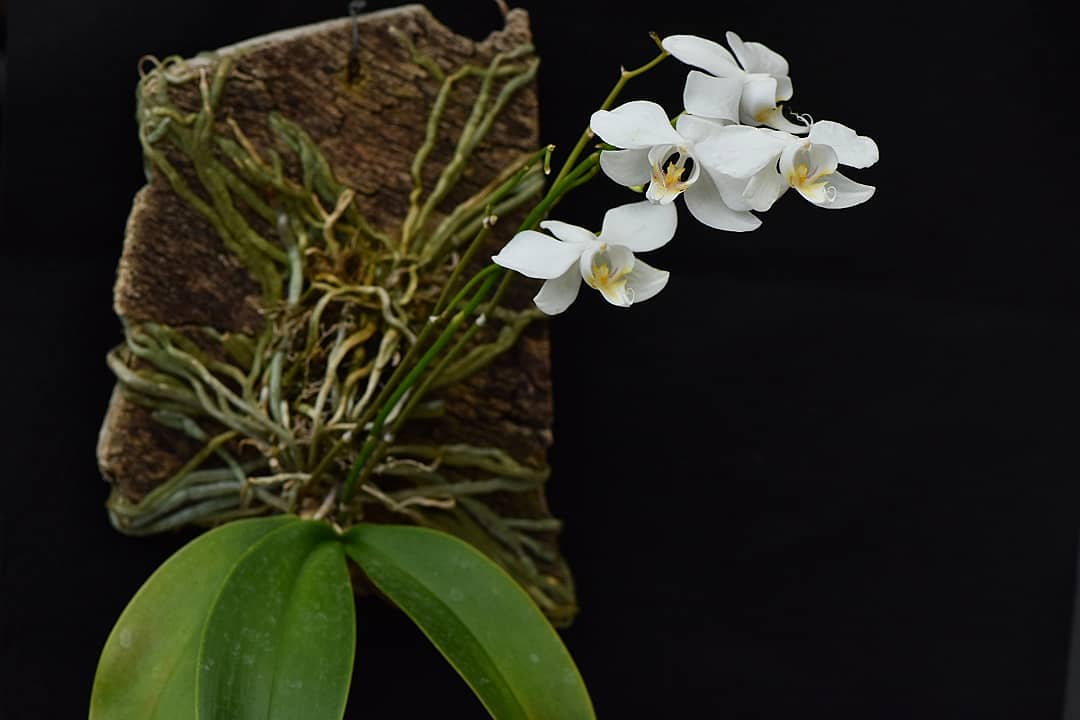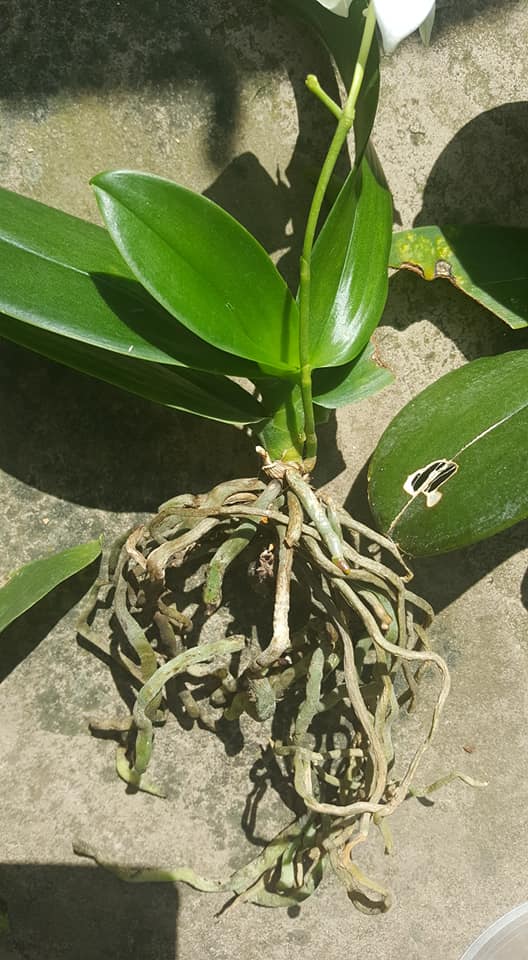Hello Orchid Lovers!!
You have come to the right place where you can get a detailed guide to successfully grow and care for beautiful orchid species. In this article we have brought Phalaenopsis Aphrodite as known as “Goddess of Fertility”.
 |
| Phalaenopsis Aphrodite |Photo Credit : marfa_k73 |
- Whats is Phalaenopsis Aphrodite and why it’s special
- Similar names in different regions
- Subspecies and Variants
- Other orchid types that are often confused with P. Aphrodite
- How to Identify
- Where to Find
- What time of year do they bloom?
- Characteristics
- Most Popular P. aphrodite Primary Hybrids
- Discovered by
- Grow and care of P. aphrodite orchid
- Light
- Temperature
- Humidity
- Substrate and growing media
- Watering
- Fertilizer
- Rest period and repotting
- P. aphradoite FAQ:
Grow and care Phalaenopsis aphrodite orchid – Aphrodite’s Phalaenopsis – Goddess of Fertility
1. Whats is Phalaenopsis Aphrodite and why it’s special
Phalaenopsis aphrodite is an orchid that grows from southeastern Taiwan to the Philippines.The dramatic appearance of Phalaenopsis orchids is one of their distinguishing characteristics. Aphrodite has thick, succulent leaves that have evolved to maximize carbon gain while minimizing water loss by opening their stomates at night in arid conditions, achieving high water use efficiency.
A single flower spike of Phal. aphrodite can produce many beautiful blooms in a long arch.The result is simple but stunning.As a result, these tropical plants are
perfect for wedding centerpieces as well as office or home decor.
2. Similar Names of Phalaenopsis aphrodite
Phalaenopsis aphrodite orchid, Aphrodite’s Phalaenopsis, Goddess of Fertility,
3. Subspecies and Variants
- Phalaenopsis aphrodite subsp. formosana
- P. aphrodite subsp. aphrodite
- P. aphrodite var Dayana
 |
| Phalaenopsis aphrodite subp. formosana | Photo Credit: plant_jdcdiary |
 |
| Phalaenopsis aphrodite subp. formosana | Photo Credit: plant_jdcdiary |
4. Confused With
P. aphrodite is often confused with a varietal form of P. amabilis. By the way, P. aphrodite subspecies “Aphrodite” is similar to P. amabilis variant “dayana” Warner & B.S.Williams.
5. Identify P. aphrodite Orchid
Where to Find
Aphrodite’s Phalaenopsis is native from Taiwan to the Philippines in primary and secondary forests, from sea level up to 300 m.
What time of year does phalaenopsis bloom?
The Goddess of Fertility blooms on a lateral basis from December to April.
Characteristics
- It’s a medium-sized, hot-to-warm-growing epiphytic with 3 to 5 fleshy, arcuate, pendant, ovate-elliptic, obovate to oblong-oblanceolate, obtuse to subacute, shiny green leaves and a short, pendulous, robust stem enveloped by imbricating leaf bases.
- The leaves are 20-38 cm long, the upper surface is uniformly dark green and the bottom is purple.
 |
| Phalaenopsis Aphrodite | Photo Credit: Erika Alexovics |
- 3 feet long, and flowers are arranged in the shape of a raceme (racemose) or in panicles (paniculate).
- Shady, humid conditions are preferable.
- The flowers are 6-9 cm in diameter and exhibit a delicate texture and have an attractive, wide-lobed shape.
- The petals of both whorls are white with a cream / green color.
- The white lip has red and yellow spots.
- Long, twisted filamentous appendages grow on both sides from its end.
- White flowers of P. aphrodite have a remarkable similarity to P. amabilis.
- Flowers of P. aphrodite are often smaller and exhibit a reddish lip disc and triangular mid lobe.
- P. aphrodite has a green flush in its throat.
- The lip of the P. aphrodite has four-horned callus.
 |
| Phalaenopsis Aphrodite Inflorescence | Photo Credit : plantaholic_land |
 |
| Phalaenopsis Aphrodite Inflorescence | Photo Credit : plantaholic_land |
6. Most Popular P. aphrodite Primary Hybrids
- P. amabilis x aphrodite ‘Bataan’
- P. aphrodite x sanderiana ‘Alger’
- P. aphrodite x equestris ‘Intermedia’
- P. aphrodite x honghenensis ‘Athena’
- P. bellina x aphrodite ‘Aphrodite’s Bell’
- P. aphrodite x kunstleri ‘Childhood’s Dream’
7. Discovered by
This species was described by Heinrich Gustav Reichenbach in 1862.
8. Grow and care Phalaenopsis Aphrodite Orchid
Here we are giving a brief idea about each and every condtion and that you should consider n order to grow a appy and healthy Orchid plant. At the end you will be able choose what are the best cultural methods and conditions for you and your plants. Let’s dive in.
Light
The first factor we are going to mention is the light level. The light level of 10000-12000 lux is required for the P. aphrodite orchid. A cloudy sky is the habitat of P. aphrodite.
Temperature
The next factor is the temperature. P. aphrodite is a thermophilic plant. P. aphrodite can survive in colder climates. More over it prefers warmer climates. It’s interesting that the plant will survive the winter at 1.7 degrees Celsius. The tip is you should keep it dry at 7 degrees Celsius or lower. The average summer day temperature is 29-31° C and night 22-26 ° C with a daily amplitude of 5-6° C. The average winter day temperature is 24-27 ° C and night 19-23 ° C with a daily amplitude of 4-6 ° C.
Humidity
Humidity about 80-85% throughout the year.
Substrate and growing media
- Humectant-treated bark with a grain size of 12-16 mm.
- Sphagnum moss with pearlite or charcoal added to improve drainage.
Watering
Water your plants on a regular basis. Watering should be done with water at 21 ° C. The precipitation strategy is wet / wet, with a somewhat drier period of 1-2 months in spring.
Fertilizer
It is recommended to apply 1/4 – 1/2 of the recommended dose of orchid fertilizer. Therefore you can use the fertilizer once a week or two.
Rest period and repotting
- You should slightly reduce watering and fertilizing after flowering for 1–2 months.
- A record should be taken after flowering.
9. Phalaenopsis aphrodite FAQ:
Q: Should I take the orchid out of its plastic pot,cup?
A: Yes you can remove them during watering If the plant is placed in a decorative pot. It will allow for proper drainage.





0 Comments